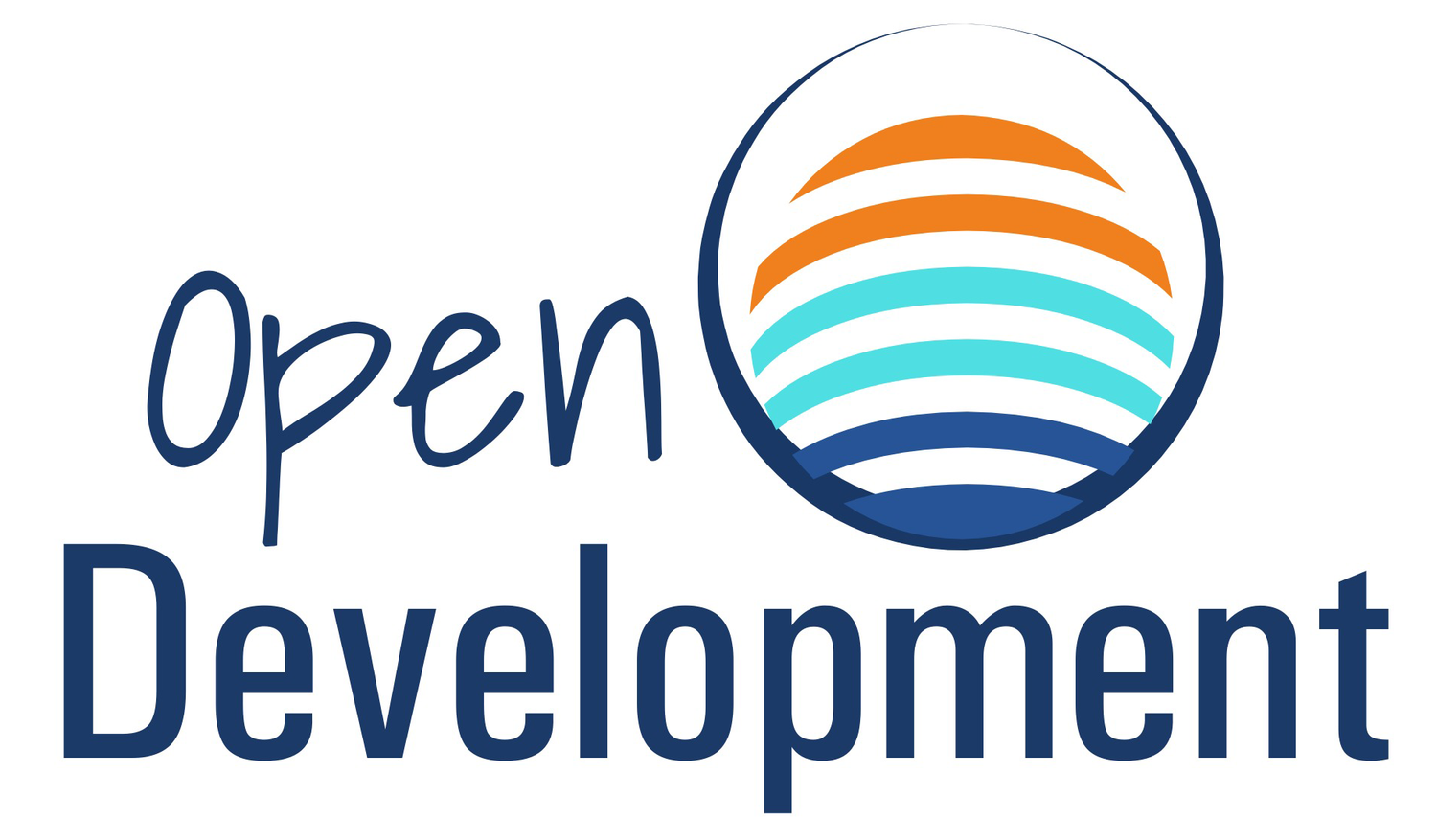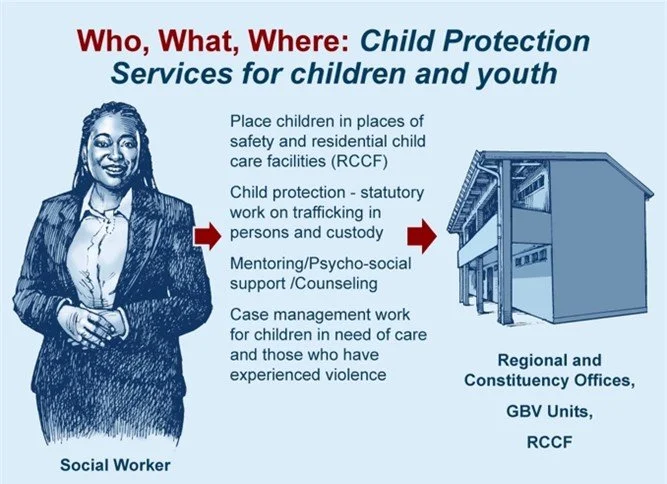Optimizing Staff to Build a Sustainable Social Sector Workforce in Namibia
Anna Isaacs, Human Resources Advisor, Open Development
Kate Steger, Communications Specialist, Open Development
Two decades ago, the need to strengthen and scale-up HIV treatment was a nationwide emergency for the Government of Namibia (GRN), with HIV prevalence rising drastically from around 3% in the early 1990s to a peak of 13% in 2009.. Through consistent effort by the GRN with support from PEPFAR and other donors over the past ten years, the country is one of the first high-burden HIV countries to approach epidemic control.
However, challenges persist—particularly for adolescent girls and young women, who remain disproportionately affected, with HIV incidence rates three times higher than those of their male peers. Sustaining progress for this vulnerable population requires targeted investments in social services - including efforts to reduce persistent GBV incidence, provide childcare protection services, and address psycho-social needs – and a social service workforce equipped to meet their needs. The GRN has shown strong political commitment to promoting the health and wellbeing of adolescent girls and young women and has adopted gender- and child-friendly policies and guidelines to reduce gender-based violence and HIV. The PEPFAR- and USAID- -funded EpiC Project, through partner Open Development, is reinforcing the GRN’s commitment by working with the Ministry of Gender Equality, Poverty Eradication & Social Welfare (MGEPESW) to strengthen the social service workforce needed to deliver on its commitments.
To reach children, adolescents, youth, and parents/caregivers with critical HIV and related social service interventions, the GRN has adopted a layered, cross-ministerial strategy. This includes initiatives led by the Ministry of Sport, Youth & National Service, the Ministry of Education, Arts & Culture, the Ministry of Health & Social Services, and the MGEPESW. A cornerstone of this approach is the Child Care and Protection Act 2015 (Act 3 of 2015) which sets the legal framework for safeguarding children and adolescents.
Collectively, these initiatives are meant to address the underlying social determinants of child and adolescent health. However, effectively translating policies into action has proven difficult. Key challenges include uneven implementation, high staff turnover, and limited funding. Of 270 social worker posts within the Ministry, fewer than half are filled—leaving just 116 social workers to fulfill the legal mandates of the Child Care and Protection Act nationwide.
Figure 1: Illustration of MGEPESW social worker duties
Rahimisa Kamuingona, Deputy Director for Child Care Services in the MGEPESW spent many years working as a social worker in the system she now oversees. Kamuingona describes the critical role social workers play in Namibia and the numerous challenges they face, including understaffing, high caseloads, and emotional burnout.
In addition to understaffing, the Child Care and Protection Act has mandated higher standards of professionalism and care. Taking a child protection case to court requires multiple home visits, frequently in remote locations, which further taxes the time and energy of Kamuingona’s limited staff.
Transportation issues, such as long distances, difficult topography, and adverse weather conditions also present challenges. Moreover, the work itself is exhausting and emotionally difficult. "You have to have a very strong core to work in social and child services, I think," Kamuingona says.These challenges, along with a lack of psychosocial support for staff, result in heavy work pressure among social workers and contribute to high staff turnover.
To address some of the challenges Kamuingona describes, Open Development, the EpiC Project’s partner in Namibia, is taking a systems approach that marks a noteworthy shift in support to the government. The USAID- and PEPFAR-funded Reach Namibia Project is building on the success of the DREAMS (Determined, Resilient, Empowered, AIDS-free, Mentored and Safe) Program by continuing to provide access to HIV prevention services to children and youth vulnerable to HIV infection. By providing social services directly, this project alleviates some of the burden on the government’s workforce. At the same time, Open Development’s work aims to strengthen the social work infrastructure within the government, promoting long-term sustainability of social services.
To this end, Open Development worked with the MGEPESW to conduct a Social Sector Workforce Landscape Analysis across the government, which demonstrated that the demand for social workers in the public sector exceeds currently staffing levels. A follow up workload analysis of social workers and related cadres in the MGEPESW identified the main types of activities these cadres perform, and aligned human resources systems to ensure job descriptions are appropriate.
Figure 2. Participants at the Social Service Workload Analysis Workshop in Windhoek, conducted as part of EpiC’s efforts to assess and optimize Namibia’s social workforce. Photo Cred: Open Development, 2024
The Social Sector Workforce Landscape Analysis supports the MGEPESW in two additional ways. First, it provides MGEPESW with evidence and outlines options for optimization of the social workforce by considering how other professional, community-based cadres could be strategically deployed to alleviate the burden on social workers. Psychological counselors have similar training as social workers but are underemployed in Namibia. Social auxiliary workers and community childcare workers can work under the direct supervision of designated social workers and assist with select functions assigned to social workers by the CCPA and other laws. Second, the analysis quantifies the potential cost savings to the GRN by shifting some of the social workers’ tasks with these other cadres, such as trauma counseling and community outreach. By taking these steps, GRN could reduce its staffing costs by approximately 10% and save an estimated $717,000 (or 12.5 million NAD) annually to implement key policies while addressing the country’s overall deficit in social workers.
With this evidence, Open Development is supporting the MGEPESW to make an investment case for the government to optimize its workforce and internal resources within its own systems. This will help realize the statutory mandate of the MGEPESW and other Ministries and ensure Namibians—particularly adolescent girls and young women who face greater risk of contracting HIV — benefit from quality social services.
These workforce optimization measures align with USAID’s approach to foster sustainable, government-led implementation of HIV-related social service interventions in Namibia. By supporting the GRN to translate its policies and plans for social welfare into practice, USAID champions the GRN as the leader in determining how to best serve the needs of children, adolescents, youth, and parents/caregivers in the country.


